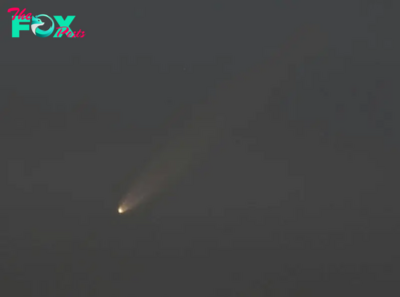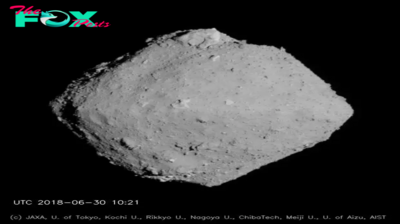Science
Space photo of the week: Astronomers make an 'artificial star' over Hawaii
What it is: The Gemini North telescope
When it was published: Feb. 7, 2024
Where it is: The Gemini Observatory at the summit of Mauna Kea in Hawaii
Why it's so special: Stars twinkle — and that isn't good if you want to study them using large telescopes. The twinkling comes from light passing through different layers of Earth's turbulent atmosphere, which leads to a blurry, jumpy image in a telescope. Astronomers call this effect poor "seeing," and it can interrupt Astronomy for many nights — or, at least, it used to.
On the Gemini North telescope, as on many modern ground-based telescopes, astronomers now use adaptive optics, which allows the telescope to correct for the distortions created by Earth's atmosphere. From the top of Gemini North, a yellow laser called TOPTICA is used to make an artificial star on traces of sodium gas in the atmosphere about 50 miles (80 kilometers) over Earth. Computers then deform the telescope's mirrors slightly to correct for any distortion.
—'Stepping stone to Mars': Minimoons may help us become an interplanetary species, says MIT astrophysicist Richard Binzel
—Undiscovered 'minimoons' may orbit Earth. Could they help us become an interplanetary species?
—Can we refuel 'dead' satellites in space? Bold new missions aim to try.
That combination of lasers and computing power enables ground-based telescopes to make observations at resolutions that equal, and sometimes exceed, powerful space-based telescopes such as the Hubble Space Telescope and the James Webb Space Telescope (JWST). With the blurring effect of Earth's atmosphere overcome, the ground-based Gemini North can use its larger mirrors to get higher-resolution images of stars, planets and galaxies. (Gemini North's mirror is 26.6 feet, or 8.1 meters, in diameter, whereas JWST's is 21.3 feet, or 6.5 m.) Astronomers hope these adaptive optics will allow ground-based telescopes to directly image exoplanets.
However, this photo and an accompanying image from a different angle are slightly misleading. The orangeyTOPTICA laser shown isn't as bright to the naked eye; it looks that way only because this is a long-exposure image, as the star trails show.
-

 Science2d ago
Science2d agoWhy Risky Wildfire Zones Have Been Increasing Around the World
-

 Science2d ago
Science2d agoIt’s Time to Redefine What a Megafire Is in the Climate Change Era
-

 Science3d ago
Science3d ago4 Astronauts Return to Earth After Being Delayed by Boeing’s Capsule Trouble and Hurricane Milton
-

 Science4d ago
Science4d agoThe Elegance and Awkwardness of NASA’s New Moon Suit, Designed by Axiom and Prada
-

 Science1w ago
Science1w agoSpaceX Launches Its Mega Starship Rocket. This Time, Mechanical Arms Catch It at Landing
-

 Science3w ago
Science3w agoYou Won’t Want to Miss October’s Rare Comet Sighting. Here’s How and When You Can See It
-

 Science1m ago
Science1m agoA New Spacecraft Could Help Determine if There’s Life on a Moon of Jupiter
-

 Science1m ago
Science1m agoWe Can Thank Deep-Space Asteroids for Helping Start Life on Earth



























